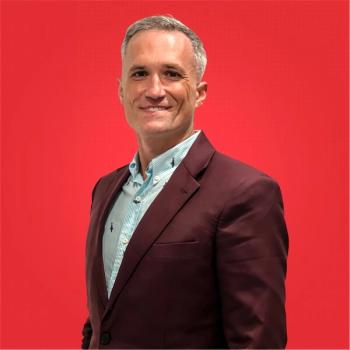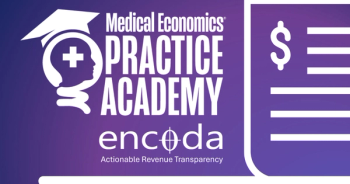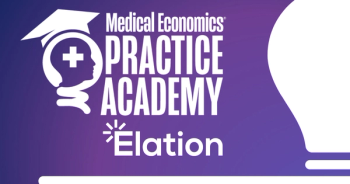
MOC changes aim to lessen burden on physicians, but debate continues
New MOC standards are intended to make the certification process easier and less costly, but physicians say they don't go far enough.
Despite new standards designed to address time and cost pressures associated with participation in maintenance of certification
In February the
The updated guidelines, which were developed over two years, are a framework for ABMS’ 24 member boards to use when implementing their MOC program. Set to take effect in 2015, they are designed to reduce redundancy between physicians’ MOC work and improvement projects in their practices.
The new standards also allow more innovation, have a more patient-centered perspective, and emphasize professionalism, patient safety, and performance improvement, says
Next: Pressure grows for MOC participation
“Continuing certification and maintenance of certification are part of a physician’s continuing professional development, and like any educational program, it requires re-evaluation and updating to remain current and relevant,” Irons says.
The leaders of the
An evolving argument
There is little doubt that MOC is a hot-button issue among physicians. And while substantial changes have occurred in the way certification has been granted historically, arguments against MOC run much deeper. Some physicians say they do not find the educational activities and testing requirements relevant to their patients or practice. Although obtaining board certification is voluntary, critics charge there is growing pressure for physicians to participate because it is being increasingly linked to hospital privileges, insurance reimbursements, and network participation. In addition, a public awareness campaign by ABMS encourages patients to choose board-certified physicians, and lets them look up their physicians’ status by visiting www.certificationmatters.org.
Physician resistance has come in many forms, too. For example, resolutions against MOC have been enacted recently by the American Medical Association and the state medical societies of New Jersey, Michigan, Ohio, Oklahoma, New York, and North Carolina, says Howard Mandel, MD, an Ob/Gyn in private practice in the Los Angeles area and MOC opponent.
Next: How has the MOC process changed?
The changes
Despite the polarizing debate, more than 450,000 physicians participate in the process. Irons says the recent changes may encourage even more to do so. “As a group, physicians are lifelong learners,” she says. “It’s just in our DNA. The language in the new standards that calls for flexibility in the construct of activities, innovation in self-assessment and education, and working with specialty societies to develop practice and specialty-relevant activities, all may drum more people into participating.”
ABMS had two main reasons to update its standards, Irons says. “Physician practice, knowledge, and skills continue to evolve over time and the standards need to reflect that changing medical environment. Also, advances in self-assessment and learning activities and how we gather information have evolved as well.”
ABMS did not acknowledge the resistance from physicians as influencing these most recent changes. The updates are expected to address the changes that have happened both in medicine and education since they were last reviewed in 2009, and address some of the comments ABMS has heard from physicians about making sure the standards are relevant and not overly burdensome.
Irons says the new standards encourage more innovation in terms of the types of activities that the member boards can accept for MOC credit. “An example of innovation would be to develop MOC activities that reflect the latest adult learning principles and also reflect how physicians practice,” she says. “For example, instead of physicians attending a lecture, which is often difficult for them to schedule, to offer more online activities.
“Also, there is language in the standards that allows the member boards to consider alternative ways of administering the high stakes exam, perhaps even to allow some resource information or open-book format, using the resources that are available for physicians in their practice settings today,” she adds.
Efforts to enhance professionalism are evident in activities designed to help members be more sensitive to diverse patient populations, such as cultural competency activities that are specific to the cultural groups in physicians’ practices, Irons says.
“Another example of the professionalism standard is to talk about the diplomates practicing wellness for themselves because when physicians are ill, they can’t take care of their patients. It’s an area we don’t often think about but it’s important to address,” she says.
Most graduate medical education courses today incorporate didactic teaching and experiential learning in patient safety, and the updated standards seek to continue that, Irons says.
Next: ABIM says its program is in compliance
She says performance-improvement modules were heavily used in the past because that was the main way practice data were gathered. The new standards allow data to be gathered in more ways, such as through registries, patient logs, patient and peer surveys, or performance-improvement CME activities.
“The goal is to focus on improving patient outcomes, the patient experience, and the value of the healthcare experience,” Irons says.
The updated standards also encourage physicians to be involved in practice improvement activities that are multidisciplinary and possibly aligned with other care-related quality improvement programs.
“We know that diplomates work across medical specialties as part of multi-professional healthcare teams and within complex healthcare systems,” she says. “If physicians are doing performance-improvement and quality-improvement activities in their healthcare settings, we are asking member boards to allow them to get MOC credit for it.”
Many healthcare settings didn’t have robust performance-improvement or quality-improvement programs until recently, she adds. “Times are different,” Irons says. “In the past 5 years, physicians have become more involved in these types of programs in their practice settings and the two have come together.”
ABIM: Program in compliance
Richard J. Baron, MD, president and chief executive officer of ABIM, the largest of the ABMS member boards, says his organization was involved in revising the standards, and the new program ABIM rolled out in January is in full compliance.
“We are an active participant in ABMS and they communicated very carefully and consistently with us so we knew where our program stood relative to the evolving standards. It has been a coordinated effort on both sides,” he says. “We had both been planning these updates for a while and there were multiple conversations across the organizations.”
Next: ABFM endorses the new standards
One example of recent change is to allow diplomates to pay their 10-year fee in annual installments, instead of all at once. Also, ABIM has added a variety of pathways that physicians can use to satisfy its requirements through activities they are performing within their health systems or professional societies, he says.
“There are lots of ways in which it has become easier to fulfill program requirements. We are deploying a more flexible program and we continue to evolve it and improve it,” Baron says.
ABFM: Ambiguity is clarified
The ABFM leadership also supports the new standards. “We feel they go a long way toward streamlining the MOC process and clarifying many of the aspects of the old standards that were ambiguous,” says James C. Puffer, MD, ABFM president and chief executive officer.
For example, he says, previously there were developmental standards in the areas of patient safety, patient experience of care, and peer surveys.
“It was the expectation that between 2009 and 2013 ABMS member boards would experiment with developing and piloting tools for assessing each of those three areas. What is quite clear in the new standards is that while there is obviously considerable emphasis on the whole area of patient safety, the other two developmental standards, specifically around patient experience of care and peer surveys, resulted in the new guidelines being somewhat agnostic. There’s no specific requirement for patient experience of care surveys, nor peer surveys. However, certainly member boards that wish to explore those areas are can do so,” he says.
“We have gone to great lengths to continuously improve our program since it began in 2003 and have a very dynamic process that looks at every aspect of each of the four components of our program and attempts to improve every aspect of the tools we utilize to assess our diplomates in each of those areas,” Puffer says.
Specifically, ABFM has sought to avoid making its physicians engage in redundant activities.
“A perfect example was our initiation of the Multi-Specialty Portfolio Approval Program that was jointly developed by ourselves and the boards of internal medicine and pediatrics,” he says. “The program, which has just successfully been transferred to the ABMS, provides an opportunity for diplomates who are doing quality improvement work within their institution or within their medical group or professional societies to be appropriately recognized and for individual diplomates to receive appropriate credit for the work they have undertaken along with their colleagues.”
Physicians who participate in boards that are not as far along in the evolution of their MOC process as ABIM and ABFM will most likely see greater changes, Puffer adds. “The good news is that before they move too much further in maturing their programs, they will be able to adopt and comport with these new guidelines that streamline and make the entire MOC process more efficient.”
Next: Dissenters call for lifetime MOC status
AAFP: Maximize quality, minimize burden
“For instance, tightening up the frequency in which practice assessment and performance improvement kinds of endeavors are undertaken and reported, having a secure exam, having that kind of ongoing approach to maintaining your competency and effectiveness,” she says.
She says a lot of thought went into the nuances of the details of the revisions. “ABMS’ communications indicated that they were working really hard to find that balance of enough stability and consistency over time that it doesn’t put an undue administrative burden or cost on physicians,” she says. “We provided comments and encouraged ABMS to continue to be cognizant of trying to find ways to maximize the value for patient care to ensure that patients are getting the best possible care while minimizing the burden on physicians.”
Dissenters' view
Despite the optimism expressed by these leaders, some physicians say the latest changes do not address the real problem. “The fact that they are calling these ‘new rules’ is somewhat preposterous considering how long this has all been in effect,” says Ron Benbassat, MD, who has been in practice in California for 20 years and is certified and recertified by ABIM. He is a leader in the organization
“All board certificates must be converted to lifetime status. Only then will MOC be voluntary,” Benbassat says. “We already engage in lifelong learning through CME requirements to keep our licenses. MOC is nothing more than a money-making scheme by the boards.”
The combined revenue of all the boards in the United States is more than $350 million, Benbassat says. “Who benefits from these tests? I would argue that it is the 450 board members, not the 800,000 private physicians in the United States,” he says.
Benbassat also objects to the boards’ statements that they accepted comments online during the revision period. Several opponents of MOC provided Medical Economics with e-mails they received stating that their comments were not being posted because they did not meet the criteria set by the moderator. “Many people tried to submit statistics and information about MOC and they were rejected,” Benbassat says.
Baron readily acknowledges that some dissenters’ comments were not allowed on the ABIM forum. “It’s not an open forum. It’s a moderated forum, and it is moderated according to principles that are posted on the site,” he says. “We welcome input on the program, but if people are going to take a subject area and post comments that say there shouldn’t be any program, people will not bother to read the comments or engage in the conversation.”
“When people say all we care about is money and that the program should be done away with, we simply don’t regard that as a comment that is engaged with how to make MOC better. We know there are people think there should not be MOC and they have lots of places on the Internet where they make that point. We are trying to manage a civil discourse on a subject on which there is a range of opinion,” he says.
He points out that many comments critical of MOC were allowed past the moderator. “It is one thing to offer specific criticisms of the program, but another to say there shouldn’t be a program and we don’t see the role of this conversation to be to give a platform to that,” Baron says.
Newsletter
Stay informed and empowered with Medical Economics enewsletter, delivering expert insights, financial strategies, practice management tips and technology trends — tailored for today’s physicians.















